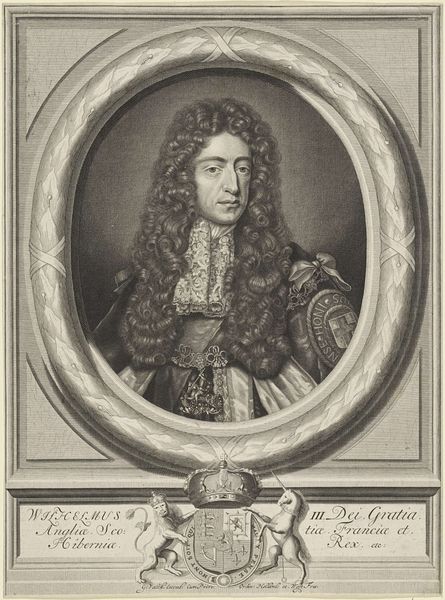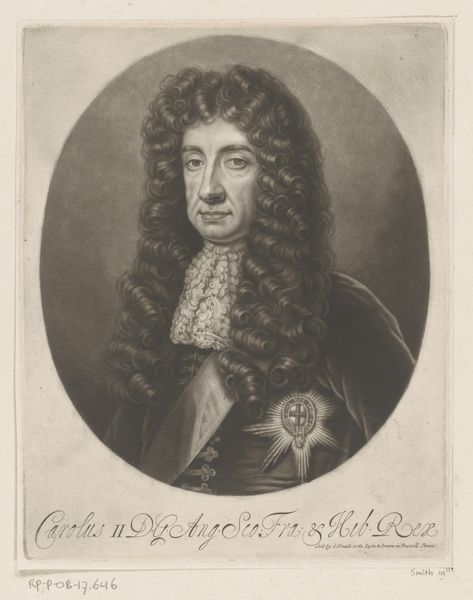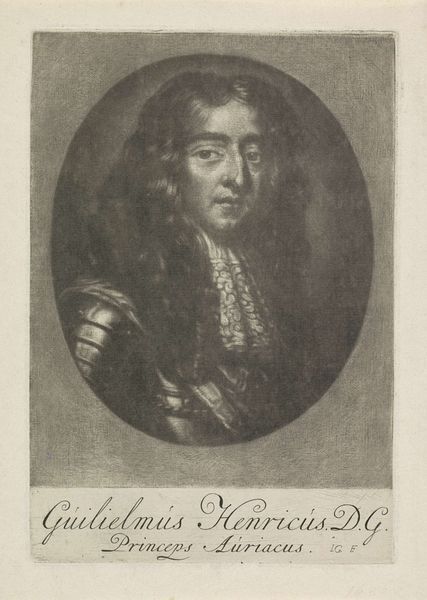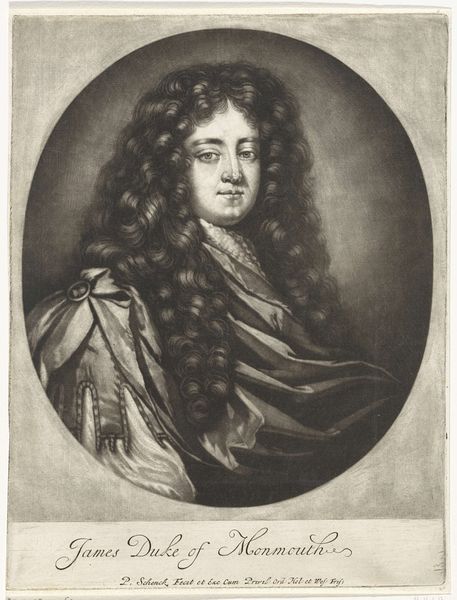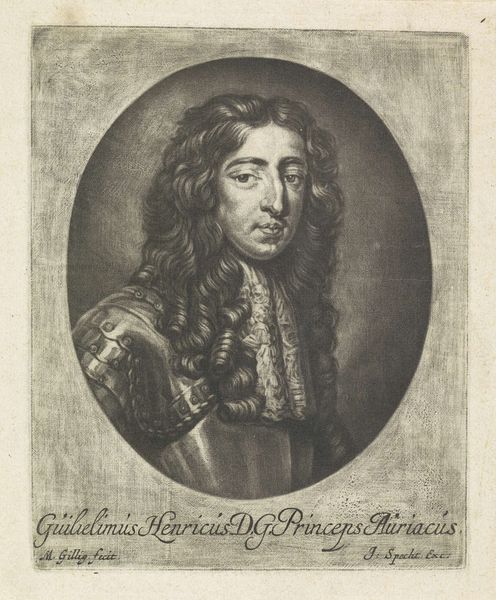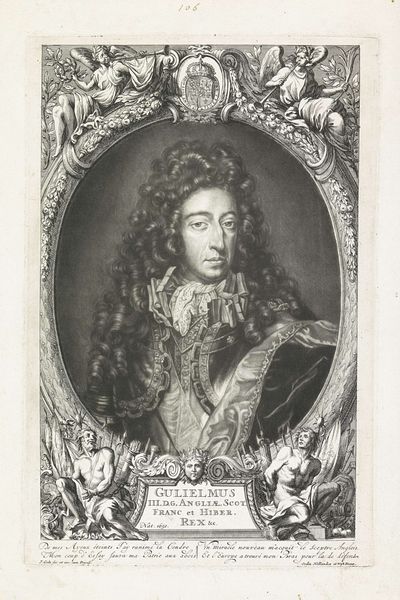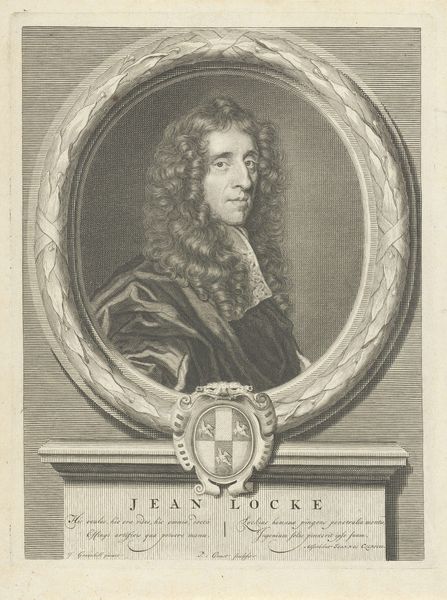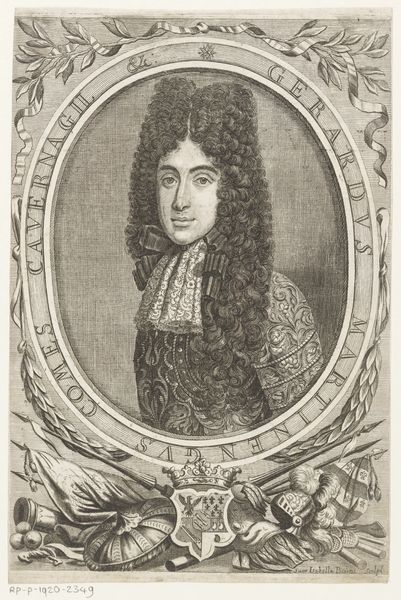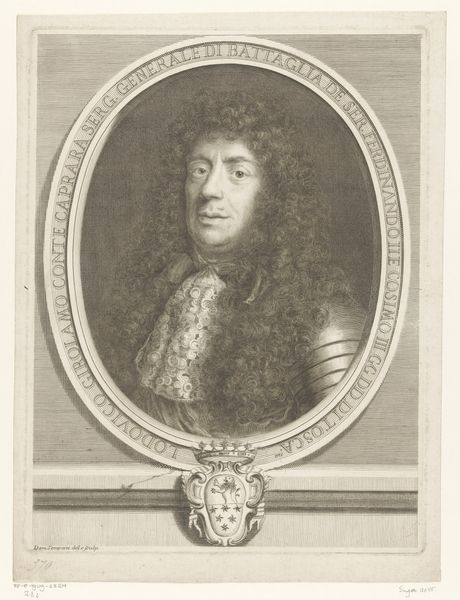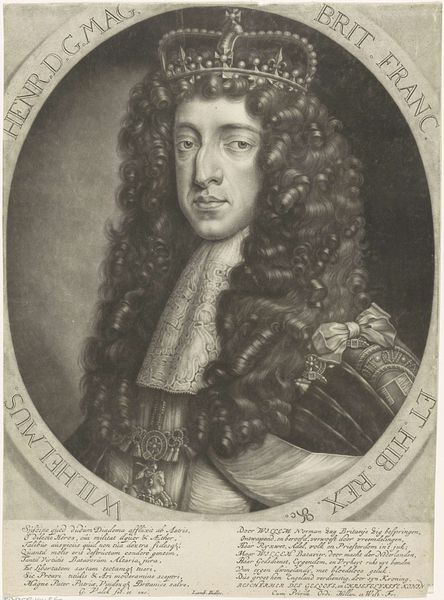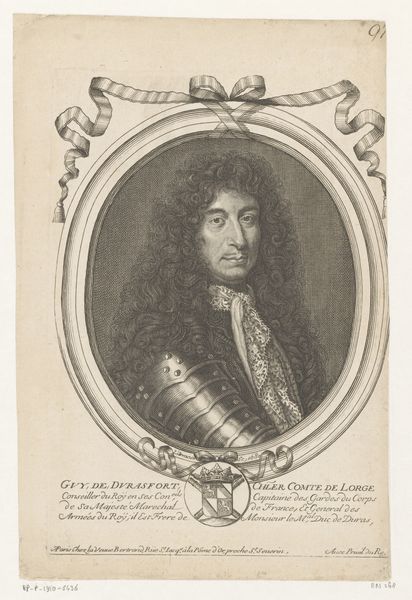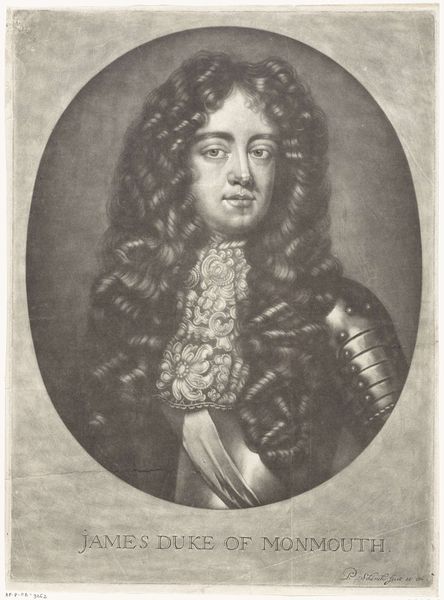
print, engraving
#
portrait
#
baroque
# print
#
old engraving style
#
history-painting
#
engraving
Dimensions: height 262 mm, width 186 mm
Copyright: Rijks Museum: Open Domain
Curator: Let’s take a look at this intriguing print: “Portret van Willem III, prins van Oranje,” an anonymous piece from between 1688 and 1726. It’s an engraving. Editor: My initial feeling is one of formal reserve, befitting royalty of the period. The detail in the lace collar and the cascading wig creates an almost impenetrable barrier, physically and symbolically. It presents this figure, Willem III, as rather inaccessible. Curator: The piece adheres to the Baroque style, certainly. You see the typical elements – rich ornamentation and a sense of controlled power, all meant to impress. These portraits weren’t just for likeness; they functioned as propaganda, shaping the image of the monarchy. Editor: Absolutely, and consider the specific symbols included: the Garter Star prominently displayed suggests honour, nobility, and connection to a lineage, projecting him as divinely ordained to rule, but maybe also subtly anxious about maintaining power. There’s a touch of melancholy, even. The eyes seem heavy. Curator: The choice of engraving itself sends a signal, being reproducible made the image available to the public. These portraits of William and Mary really solidified their image, specifically after the Glorious Revolution, as being central figures to stability and protestant leadership, in contrast with the past catholic leadership. It’s clever image making. Editor: The print style amplifies a message of unwavering strength. Engravings give the impression of permanence, and yet it almost hints at the transient nature of power. He presents strength but his eyes betray weariness. It adds an unexpectedly introspective dimension. Curator: You raise an important point regarding psychological elements. Certainly these portraits were carefully crafted to elicit particular emotional and political responses from various viewing publics. And this would continue for years to come. Editor: It's remarkable how such controlled imagery still manages to express, perhaps unintentionally, more complex emotions. These enduring symbolic images stay lodged in cultural memory and we find ourselves as affected as audiences centuries before. Curator: I think examining prints and portraits can expose how rulers navigated their relationship with those they governed, specifically through very calculated forms of representation. Editor: Yes, this portrait becomes more than just an image; it’s an artifact that retains potency in our own time.
Comments
No comments
Be the first to comment and join the conversation on the ultimate creative platform.
